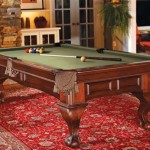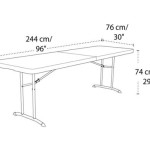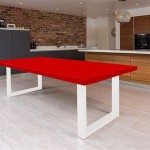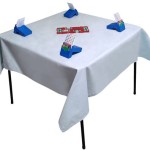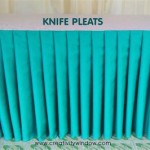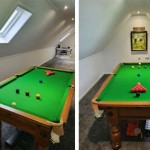Outdoor Cafe Chairs and Tables: A Comprehensive Guide
Outdoor cafe seating is a crucial element in the overall ambiance and functionality of any food service establishment that seeks to capitalize on open-air spaces. The selection of appropriate chairs and tables not only impacts the aesthetic appeal but also directly affects customer comfort, operational efficiency, and long-term cost-effectiveness. This article provides a comprehensive overview of factors to consider when choosing outdoor cafe chairs and tables, encompassing materials, styles, ergonomics, maintenance, and relevant regulations.
The primary purpose of outdoor seating is to extend the cafe's service area beyond the confines of its interior. This expansion is particularly valuable during periods of pleasant weather, allowing establishments to increase their customer capacity and generate additional revenue. Furthermore, well-designed outdoor seating contributes to the overall streetscape, enhancing the visual appeal of the business and the surrounding environment.
However, outdoor furniture is subject to environmental stressors that indoor furniture does not encounter. These include direct sunlight, rain, wind, and temperature fluctuations. Consequently, materials chosen for outdoor cafe chairs and tables must be durable, weather-resistant, and easy to maintain. Cost-effectiveness is also a key consideration, requiring a balance between initial investment and long-term durability.
Key Considerations for Material Selection
The material selection for outdoor cafe chairs and tables is paramount to their longevity and overall performance. Each material possesses distinct properties that make it suitable or unsuitable for specific environments and applications. Common materials include metal, wood, plastic, and composite options, each with its advantages and disadvantages.
Metal: Metal furniture, particularly aluminum and wrought iron, is renowned for its durability and strength. Aluminum is lightweight, rust-resistant, and can be formed into a variety of designs. It is often powder-coated to provide additional protection against the elements and to enhance its aesthetic appeal. Wrought iron, while heavier and more expensive, offers a classic, elegant look. However, it requires regular maintenance to prevent rust and corrosion. Stainless steel is another option, providing excellent corrosion resistance but typically at a higher cost. Metal furniture is generally easy to clean and maintain, requiring only occasional washing with soap and water.
Wood: Wood provides a natural, aesthetically pleasing look that can complement a range of cafe styles. Teak is a popular choice due to its high oil content, which makes it naturally resistant to moisture, insects, and decay. Other hardwoods, such as acacia and eucalyptus, are also used, but they may require more frequent maintenance and treatment with protective oils or sealants. Softwoods like pine and cedar are less durable and are generally not recommended for high-traffic commercial settings. Wood furniture requires regular cleaning and sealing to prevent warping, cracking, and fading.
Plastic: Plastic furniture, particularly resin and polypropylene, is a cost-effective and lightweight option. It is available in a wide range of colors and styles and is resistant to moisture and fading. However, plastic furniture can be less durable than metal or wood and may be susceptible to cracking or breaking under heavy use or extreme temperatures. High-quality recycled plastic is also an increasingly popular option, offering a more sustainable choice without sacrificing durability. Plastic furniture is easy to clean and requires minimal maintenance.
Composite Materials: Composite materials, such as wood-plastic composites (WPC) and recycled plastic lumber, offer a blend of durability and aesthetics. WPC combines wood fibers and plastic polymers, providing a material that is resistant to moisture, insects, and decay while retaining the look and feel of wood. Recycled plastic lumber is made from recycled plastic waste, offering a sustainable and durable alternative to traditional wood. Composite materials require minimal maintenance and are resistant to cracking, warping, and fading.
Styles and Ergonomics for Optimal Customer Comfort
The style of outdoor cafe chairs and tables should complement the overall design of the cafe and the surrounding environment. Ergonomics plays a crucial role in ensuring customer comfort and encouraging longer stays, which can translate to increased sales. Considerations include chair height, seat depth, back support, and table size.
Chair Styles: The choice of chair style will depend on the cafe's overall aesthetic and the intended use of the seating area. Bistro chairs, known for their classic French design, are a popular choice for casual outdoor seating. Stackable chairs are practical for maximizing space and simplifying storage. Lounge chairs offer a more relaxed seating option for cafes with a focus on comfort and relaxation. Armchairs provide additional support and comfort, particularly for customers who may be spending extended periods of time. Bar stools are suitable for high-top tables or bar areas.
Table Styles: Table size and shape should be appropriate for the type of food and beverages served and the number of customers expected to be seated. Small round tables are ideal for intimate conversations and light refreshments. Larger rectangular tables are suitable for groups and meals. Square tables offer a versatile option that can be easily arranged to accommodate different group sizes. Folding tables provide flexibility for events and can be easily stored when not in use. Table height should be appropriate for the chairs or stools used, ensuring comfortable dining and conversation.
Ergonomic Considerations: Ergonomics refers to the design of furniture to optimize human well-being and overall system performance. When selecting outdoor cafe chairs, consider the seat height, seat depth, and back support. Chairs should be at a height that allows customers to comfortably rest their feet on the ground. Seat depth should be sufficient to provide adequate support for the thighs. Back support is essential for maintaining good posture and preventing back pain. Armrests can also enhance comfort, particularly for customers who may be spending extended periods of time. Table height should be appropriate for the chairs used, allowing customers to comfortably reach their food and beverages without straining.
The arrangement of outdoor seating is also important for creating a welcoming and comfortable environment. Sufficient space should be provided between tables to allow for easy movement and prevent overcrowding. Consider the impact of sunlight and wind on seating areas and provide shade or windbreaks as needed. Strategic placement of plants and landscaping can also enhance the ambiance and create a more inviting outdoor space.
Maintenance, Regulations, and Accessibility
Proper maintenance is essential for prolonging the life of outdoor cafe chairs and tables and maintaining their appearance. Compliance with relevant regulations, including accessibility standards, is also crucial. Planning for these considerations can save time and money in the long run, and helps ensure an inviting ambiance for all visitors.
Maintenance Procedures: The specific maintenance requirements will vary depending on the material used. Metal furniture should be inspected regularly for rust or corrosion and treated with protective coatings as needed. Wood furniture should be cleaned and sealed regularly to prevent warping, cracking, and fading. Plastic furniture can be cleaned with soap and water. Composite materials require minimal maintenance and can be cleaned with a damp cloth. Cushions and upholstery should be cleaned regularly to prevent staining and fading. Regular inspections should be conducted to identify any damage or wear and tear and to make necessary repairs.
Regulations and Permits: Before installing outdoor seating, it is essential to check with local authorities regarding any regulations or permits that may be required. These regulations may cover aspects such as sidewalk width, pedestrian access, and noise levels. Compliance with accessibility standards, such as the Americans with Disabilities Act (ADA), is also crucial. ADA guidelines require that a certain percentage of tables and seating areas be accessible to individuals with disabilities. This may include providing tables of appropriate height and clearance and ensuring that pathways are wide enough to accommodate wheelchairs.
Accessibility: Ensuring accessibility to outdoor seating for all customers, including those with disabilities, is a legal and ethical responsibility. This includes providing accessible pathways, tables, and seating areas. Accessible pathways should be wide enough to accommodate wheelchairs and other mobility devices. Tables should have sufficient knee clearance to allow individuals using wheelchairs to comfortably sit at the table. Seating areas should include a mix of seating options, including those with and without armrests, to accommodate a variety of needs. Staff should be trained to assist customers with disabilities and to ensure that they have a comfortable and enjoyable experience.
Storage: Secure storage for outdoor furniture is important, especially during periods of inclement weather or when the cafe is closed. If storage is limited, consider stackable chairs or folding tables. Protective covers can also be used to protect furniture from the elements. Storage should be easily accessible and convenient to minimize the time and effort required to set up and take down the seating area.
In conclusion, selecting the right outdoor cafe chairs and tables involves careful consideration of materials, style, ergonomics, maintenance, and regulations. By prioritizing these factors, cafe owners can create inviting and functional outdoor spaces that enhance the customer experience and contribute to the overall success of their business. Regular maintenance and adherence to accessibility standards are essential for ensuring the longevity and inclusivity of outdoor seating areas.

Nuu Garden 3 Piece Cast Aluminum Outdoor Bistro Set Patio Furniture Table In Black Scd004 Wkl The Home Depot

Lancaster Table Seating Alloy Series Orange Outdoor Cafe Chair

Lancaster Table Seating Alloy Series 35 1 2 X White Standard Height Outdoor With 4 Cafe Chairs

Nordic Plastic Wood Outdoor Table And Chairs Cafe Restaurant One 4 China Whole 21 7 From Good Er Co Ltd Globalsources Com

Outdoor Round Table Chair Garden Furniture Set Patio Home Bistro Bar Cafe Decor

Lancaster Table Seating Alloy Series 31 1 2 X Orange Standard Height Outdoor With 4 Cafe Chairs

Outdoor Furniture Andy Thornton

Outdoor Cafe Furniture Loom Crafts

Outdoor Cafe Bistro Sets Villa Terrazza Patio Furniture Sonoma 707 933 8286

Aluminium Cafe Bistro Set Garden Furniture Table And Chair 3pc Patio Cast Black



